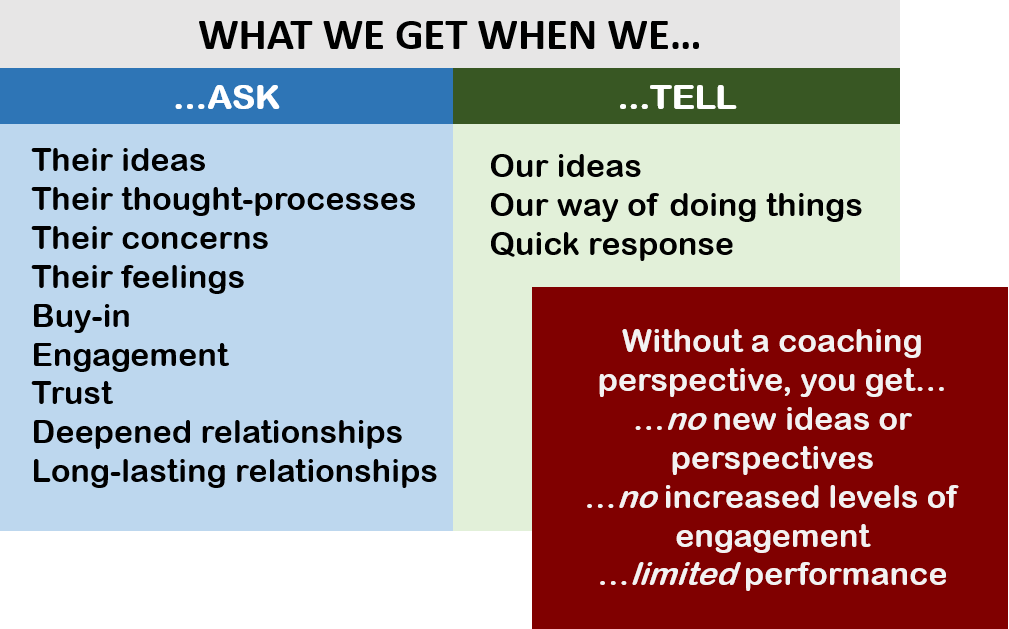Since the dawn of business as we know it, the leader’s role has been to know more than their team. Historically, the command and control style of management has reigned supreme, calling for managers with a high level of specialization to impart their technical knowledge onto their direct reports and ensure that knowledge is absorbed and used correctly. However, this method falls short when it comes to the modeling and teaching soft skills, which we’ve come to understand as the most valuable skills in today’s workforce.
Unlike hard skills such as specialized knowledge and technical experience, soft skills are much more valuable in the workplace, yet much less straight-forward to teach. It explains why today’s leaders prioritize their own ability to coach their employees toward mastering soft skills, such as communication, collaboration, problem-solving and interpersonal skills like emotional intelligence and self-awareness.
The transition from commanding to coaching requires managers change their own understanding of the role they play as a leader and the value they bring to those they manage—and this can be tough. Studies show that even managers who consider themselves above-average coaches score in the bottom third according to others. This is largely because managers don’t understand how much work goes into consciously correcting old habits and practicing new ones that engage, challenge and inspire employees to grow. Many also don’t understand the different styles of coaching and which one to use in a given situation.
Here are a few coaching approaches and one common pitfall in which many leaders feel they are coaching, each varying on the level of expertise or advice put into the relationship by the coach, as well as the motivational energy pulled out of the coachee. But which one should leaders strive to hone?
Directive “coaching” occurs through telling.
It is the sharing of as much knowledge as possible with a junior employee, expecting he will listen carefully, absorb it, and run with it. Though the coach puts an abundance of information into the exchange, it doesn’t energize the employee nor foster autonomy and accountability. As the proverb goes, “You can lead a horse to water, but you can’t make him drink.”
This approach is at times the least effective in a work environment, as it lacks co-creation, which is central to long term innovation and success. Yet, many leaders use this approach and confuse being directive with coaching. Remember, a dialogue (asking) – not a monologue (telling) – sparks critical thinking, and thus growth.
Laissez-faire is all about leaving it alone.
When a leader chooses not to step in and advise, it leaves their direct reports responsible for working through the task themselves, which, in certain situations, is the best way to encourage growth and problem-solving skills. This hands-off approach demands a team of strong self-starters who thrive on their own. Laissez-faire coaching can be effective only when trust has been established and there is clarity around the collective desired outcome.
Nondirective coaching is rooted in asking the right questions and listening without judgement.
The coach puts little information of their own into the mix and instead works to pull creativity and insight from the one being coached by asking questions that engage their critical thinking skills.
Scenario: If your report comes to you in search of a solution to a budget problem, instead of telling them the ways you’ve handled budget issues in the past, ask what, where, who and when questions that guide them toward a solution of their own, keeping them rooted in reality, not the question of why. This could be, “What does the Q2 budget say about this situation?” or, “Who would you like to work with on this?”
Strive to master situational coaching.
Situational coaching is the sweet spot between directive and nondirective styles. It fosters self-empowerment and improves decision-making skills This style calls on leaders to become masters of the moment and strike the right balance of informational advice and questions for which the leaders have no answer to themselves. So instead of “leading the witness” by asking a question in which you can direct your employee’s response, together you are engaged and energized to come up with innovative ways to achieve your desired objectives. Together you take ownership of responsibilities and find solutions.
Scenario: If an employee comes to you with a complaint that a team member isn’t putting enough effort into a project, ask questions that push them to practice leadership and communication, like, “What would great look like?” or, “If you were my mentor, how would you coach me to move through a similar situation?”
If they’re unsure where to start with an issue, ask questions about the goal they have in mind and what they want to gain. It keeps them focused on what matters most and jumpstarts the process of talking through the problem independently. If they feel stuck with limited options, help broaden their scope of thought, which can be as simple as asking, “If you had a magic wand, what would you do with it?” And if you find they are still stuck, then share a way you’ve handled similar situations.
Once you make nurturing your employees’ soft skills a priority, you reap the benefits of more motivated and autonomous workers. Leadership training on how to coach can be truly transformative to an organization, and it all starts with reading the situation, asking the right questions and sharing appropriate advice.






